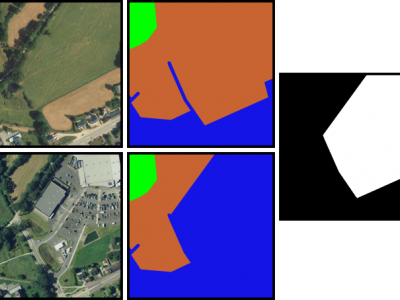Communications

In ultra-wideband optical transmission covering S, C, and L bands, the inter-channel stimulated Raman scattering (ISRS) leads to additional power loss in the S band. This loss can be compensated by either lumped amplifiers (Thulium-doped fibre amplifiers) or distributed Raman amplification (DRA).
- Categories:
 71 Views
71 Views
The atmospheric radio propagation data set includes atmospheric environment data and radio frequency propagation phase detection data. Atmospheric environment data is collected by temperature, humidity and pressure sensors with a sampling rate of 1. The test time lasts for 10,000 seconds. RF propagation phase jitter was measured by the phase comparison method using a digital multimeter (Keysight 34411A) with a sampling rate of 1. The measurement time is 40,000 seconds.
- Categories:
 194 Views
194 Views
Existing end-to-end congestion control algorithms, in Transmission Control Protocol (TCP), use packet loss and queueing delay for congestion detection, and use static control laws to adjust the sending rate and to control the congestion. This approach presupposes that the network, and its interaction with the congestion control mechanism, is static or quasi-static. In practice, the state of the network continuously changes over time, resulting in suboptimal performance of existing algorithms.
- Categories:
 116 Views
116 Views
The fifth generation (5G) wireless communications system offers faster data rates, lower latency, and higher number of interconnecting devices. Various 5G channel models were developed to study its stochastic characteristics prior to its implementation. These channel models generate multipath components that are grouped into clusters when they have similar properties in delay and angles. The multipaths and multipath clusters are used as datasets in multipath clustering which is used to examine the propagation properties of the 5G system. However, datasets are prone to outliers.
- Categories:
 293 Views
293 Views
Current neural network solutions for channel estimation are frequently tested by training and testing on one example channel or similar channels. However, data-driven algorithms often degrade significantly on other channels which they are not trained on, because they cannot extrapolate their training knowledge. Online training can fine-tune the offline-trained neural networks to compensate for this degradation, but its feasibility is challenged by the tremendous computational resources required.
- Categories:
 182 Views
182 Views
This dataset contains results of the 60 GHz indoor sensing measurement campaign using a bistatic OFDM radar based on 5G-specified positioning reference signals (PRSs). The data can be used for testing end-to-end indoor millimeter-wave radio positioning as well as simultaneous localization and mapping (SLAM) algorithms, including channel parameter estimation. Beamformed PRS with dense angular sampling in transmission and reception allows efficient capture of line-of-sight (LoS) as well as multipath components.
- Categories:
 2066 Views
2066 Views
Owing to the substantial bandwidth they offer, the exploration of 100+ GHz frequencies for wireless communications has surged in recent years. These sub-Terahertz channels are susceptible to blockage, which makes reflected paths crucial for seamless connectivity. However, at such high frequencies, reflections deviate from the known mirror-like specular behavior as the signal wavelength becomes comparable to the height perturbation at the surface of the reflectors.
- Categories:
 157 Views
157 ViewsAnomaly detection plays a crucial role in various domains, including but not limited to cybersecurity, space science, finance, and healthcare. However, the lack of standardized benchmark datasets hinders the comparative evaluation of anomaly detection algorithms. In this work, we address this gap by presenting a curated collection of preprocessed datasets for spacecraft anomalies sourced from multiple sources. These datasets cover a diverse range of anomalies and real-world scenarios for the spacecrafts.
- Categories:
 831 Views
831 ViewsTo access this dataset without purchasing an IEEE Dataport subscription, please visit: https://zenodo.org/doi/10.5281/zenodo.11711229
Please cite the following paper when using this dataset:
- Categories:
 989 Views
989 Views
These datasets are collected from the tests that were performed for decentralized synchronization among collaborative robots via 5G and Ethernet networks using with/without causal message ordering. These files have different names depending on the connection type and causality type. For example, 5G_with_causality.txt file stores the test results which were performed on a public 5G network using causal message ordering for different cobot groups like 5,10,20,30,40. The test results for each robot group are separated in each txt file.
- Categories:
 29 Views
29 Views
